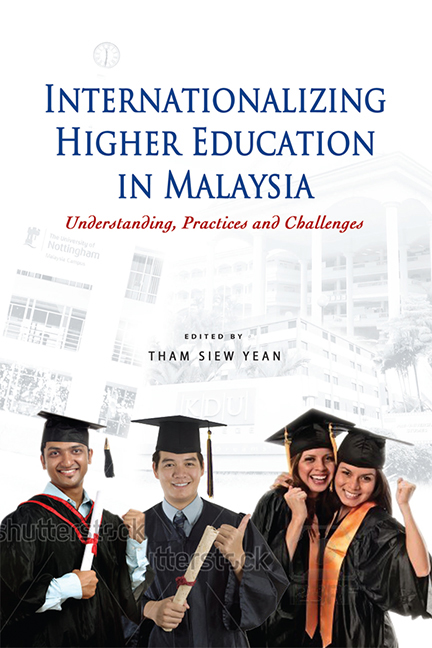Book contents
- Frontmatter
- Contents
- List of Tables
- List of Figures
- Preface
- Contributors
- 1 From the Movement of Itinerant Scholars to a Strategic Process
- 2 Towards Understanding the Internationalization of Higher Education and its Challenges
- 3 Public Universities: Development and Internationalization
- 4 Private Higher Education Institutions: Development and Internationalization
- 5 Macro Perspectives: Ideas, Practices and Challenges
- 6 Micro Perspectives: Ideas, Practices and Challenges
- 7 Concluding Remarks
- Index
5 - Macro Perspectives: Ideas, Practices and Challenges
Published online by Cambridge University Press: 21 October 2015
- Frontmatter
- Contents
- List of Tables
- List of Figures
- Preface
- Contributors
- 1 From the Movement of Itinerant Scholars to a Strategic Process
- 2 Towards Understanding the Internationalization of Higher Education and its Challenges
- 3 Public Universities: Development and Internationalization
- 4 Private Higher Education Institutions: Development and Internationalization
- 5 Macro Perspectives: Ideas, Practices and Challenges
- 6 Micro Perspectives: Ideas, Practices and Challenges
- 7 Concluding Remarks
- Index
Summary
INTRODUCTION
Given the policy emphasis in Malaysia, it is important to gauge the readiness and extent of internationalization in higher education institutions (HEIs) in the country. Pertinent issues to be examined include the current status of internationalization, providers' understanding and perceptions of internationalization, the reasons for internationalizing, its advantages and disadvantages, and providers' strategies for internationalization. It is also equally important to ascertain which aspects of internationalization are expanding rapidly and the key drivers of internationalization. It is generally assumed that private higher education institutions (PrHEIs) are relatively more profitmotivated compared to public higher education institutions (PuHEIs) due to the provision of government funding for the latter. PuHEIs, especially those designated as research universities, are expected to be more comprehensive in their understanding of internationalization due to their background, as explained in Chapter 2. Hence, it is hypothesized that different institutions, either by type or age, may have different understandings and rationales for internationalizing their respective institutions.
However, even if PrHEIs and PuHEIs have the same or similar motivations and priorities, this decision is not without implementation problems. The IAU 2005 Internationalization Survey Report (Knight 2006) listed several obstacles that can impede a successful and sustainable implementation of internationalization in HEIs. These include competing priorities, human resource, finance, administrative difficulties, problems in managing international students as well as problems related to recognizing qualifications from other countries. Thus, another relevant issue to be examined is whether different types of institutions face different obstacles in their internationalization process. In other words, it is hypothesized that different types of HEIs may face different challenges in their endeavour to internationalize. In order to test both hypotheses, a survey instrument was developed based on the IAU 2005 Internationalization Survey of Institutions (IAU 2005) but adapted to suit the local context for the purpose of the field work that was conducted for this book.
- Type
- Chapter
- Information
- Internationalizing Higher Education in MalaysiaUnderstanding, Practices and Challenges, pp. 87 - 112Publisher: ISEAS–Yusof Ishak InstitutePrint publication year: 2012

